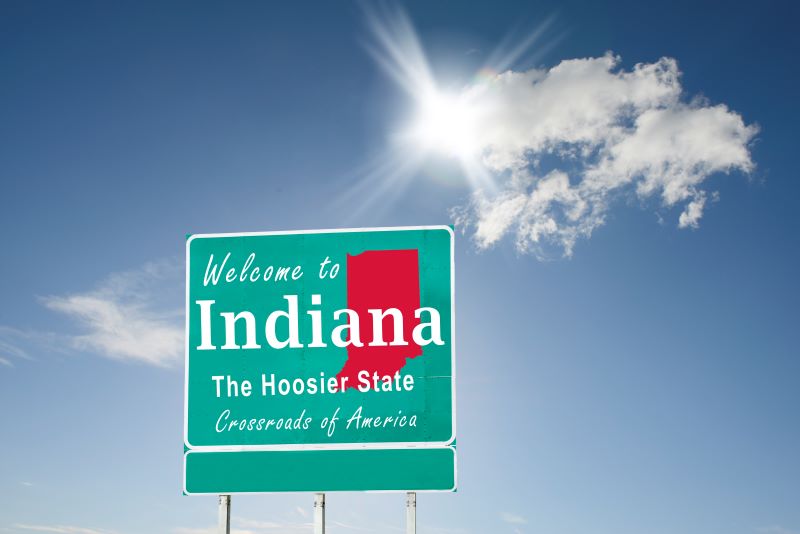Expenses, including taxes, housing, groceries, and utilities, vary from one state to the other. We created a list of the top 10 most expensive states to live in America to help you examine the factors that distinguish them from other places.
Most lean towards moving to the cheapest US states to afford necessities, make a good salary, buy a lovely home, and live a comfortable life. Thus, they avoid the highest cost of living states in this country.
Hawaii
Living in an island state sounds dreamy for people who want to spend time in nature and swim in turquoise waters. While being recognized as the most picturesque and beautiful, Hawaii is also one of the most expensive states to live in 2024.

- Living Costs: Hawaii has a cost of living index of 193.3, which is almost two times higher than the US average. Despite that, the poverty rate in this state is very low, which means most residents earn a good income that enables them to afford the basics.
- Housing: The average house in Hawaii costs slightly over $730,500, above the national average. For this reason, only 29% of Hawaii’s residents have become homeowners.
- Healthcare: When researching what is the most expensive state to live in, you will undoubtedly discover Hawaii as first on the list. But when it comes to healthcare, this state’s residents pay a reduced amount.
- Education: Getting a college degree in this state is more affordable than the national average. Also, most public schools, including middle and high school education programs, don’t require residents to pay tuition.
- Transportation: While a taxi may be convenient for getting around this island state, it is more expensive than a bus ticket to the nearest destination.
New York
New York offers an urban atmosphere, breathtaking landscapes, and many entertainment opportunities. However, it is also one of the most expensive states in America.
- Living Costs: New York has a 148.2 cost of living index, but residents’ living expenses vary depending on their lifestyles.
- Housing: The price for an average home in this state amounts to $373,880, which is much higher than the US average. This prevents the majority of residents from becoming homeowners.
- Healthcare: Many healthcare facilities in New York charge a lot for their services, so medical attention in this state is expensive.
- Education: New York residents receive an education tax credit for college education, but students still have to pay high tuition.
- Transportation: Intense traffic and transportation costs make it challenging for residents to get around the state, and they use public services as their fastest and most affordable option.
California
The sunny state of California offers plenty of fun choices, but it is far from affordable to its residents.
- Living Costs: California’s cost of living index is 142.2, and the number of homeless people in this state is very high because the average salary is insufficient for many to survive.
- Housing: Most residents rent homes in this state since the price for a house is nearly $684,000.
- Healthcare: While the state offers low-cost healthcare options for low-income residents, insurance and medication prices are generally high.
- Education: Private schooling in this state is much more expensive than public. However, California offers free tuition if students attend community colleges for the first two years.
- Transportation: Gas prices and expenses in California are incredibly high, and most people rely on metro rides.
Massachusetts

Massachusetts offers numerous opportunities for outdoor adventures, but the taxes and living expenses are considered too high.
- Living Costs: Expensive groceries and other necessities have given this state a cost of living index 135. Despite that, the poverty rate in Massachusetts is low.
- Housing: With the median home price exceeding $518,200, this state’s housing expenses are 77% higher than the US average.
- Healthcare: Many state residents struggle to afford health insurance because it is 18% higher than other areas.
- Education: This state’s school establishments are world-renowned and top-rated, offering high-quality education for an acceptable cost.
- Transportation: Commuting across Massachusetts is the most affordable option with trains instead of paying for gas to use a private vehicle like a car.
Oregon
The mountains and woods make Oregon a unique state to live in. Unfortunately, it doesn’t offer the most affordable living conditions.
- Living Costs: This state received a COLI of 130 because the living costs, including groceries and utilities, are only slightly higher than the American average.
- Housing: Not many people in Oregon own their homes since the price for a median house is nearly $447,970.
- Healthcare: The costs for medical care continuously increase in this state, making it difficult for residents to afford medical bills and insurance.
- Education: Oregon residents can study in public schools for free. They also have the option to choose a tuition-free degree.
- Transportation: Since the state has many transportation fees and fines set in place, residents mainly use public transit.
Alaska
Alaska’s natural beauty is very inviting despite its reputation as one of the most expensive states in America.
- Living Costs: With a cost of living index of 127, this state’s expenses are 30% higher than the American average.
- Housing: An average house in Alaska costs almost $300,600, which is very expensive even though most residents earn high salaries.
- Healthcare: Medical services charge residents high prices for proper care, and only a few are eligible for low-cost insurance if they meet specific requirements.
- Education: Unlike other indexes, education expenses in Alaska are lower than the national average.
- Transportation: Alaska’s geographical position is remote, and residents’ access to transportation is limited, except for car rentals and railroad services.
Maryland
Although Maryland is not a large state, it is densely populated, and the community is culture-oriented. However, residents are not particularly fond of the state’s high expenses.
- Living Costs: Despite most Maryland residents earning good salaries and the state’s low poverty levels, it received a COLI of 124.
- Housing: Although many state residents are homeowners, the average house price, around $366,580, is still considered high.
- Healthcare: The health insurance coverage in this state is above 20% higher than the national average.
- Education: Another factor that places Maryland on the list of the top 10 most expensive states to live in is the higher-than-US-average college education tuition.
- Transportation: Due to the state’s costly vehicle registration fees, residents often ride in local buses to get from one place to another.
Connecticut

Connecticut is a state with small cities and quiet rural areas, but it fails to provide affordable living conditions for its residents.
- Living Costs: Expensive utilities have resulted in this state’s cost of living index reaching 121.6.
- Housing: Despite most residents earning high wages, the price for an average home in Connecticut, $318,096, is costly when compared to other areas.
- Healthcare: Health insurance costs in this state vary depending on the plan people choose for their specific health conditions.
- Education: Although the state offers free programs for college attendees aged over 62, Connecticut’s education tuition is higher than the national average.
- Transportation: Gas prices and vehicle maintenance costs in this state fluctuate and increase often, forcing residents to rely on public transport.
Rhode Island
Rhode Island is a history-rich state with beautiful beaches and magnificent scenery. But living comfortably here can cost residents a lot of money.
- Living Costs: The state’s cost of living index is 117.2, and the community mostly struggles to pay for expensive utilities.
- Housing: A family can purchase a home for around $372,800, which is over 20% higher than the US average.
- Healthcare: Low-income residents can receive insurance for free, but others have to pay high monthly amounts.
- Education: Rhode Island residents pay a two times lower education tuition than international students.
- Transportation: Bus services are very affordable in this state, unlike the continuously increasing gas prices.
Vermont
Vermont’s rural atmosphere is comforting for many. But its living expenses are as high as those of the mountains.
- Living Costs: With a COLI of 117, Vermont’s living costs are 17% higher than the United States average.
- Housing: Houses in this area cost around $300,000, which is why only 15% of residents are homeowners.
- Healthcare: This state offers many options for free or low-cost healthcare plans if residents are qualified.
- Education: Vermont’s private high school and university students pay high tuition and comprehensive fees.
- Transportation: The state’s transportation expenses are lower than the national average and don’t contribute to increased living costs.
Recap
To discover how expensive it is to live in a particular state, we relied on the cost of living index (COLI) in each one on this list. The data helped us determine which states exceed 100.




